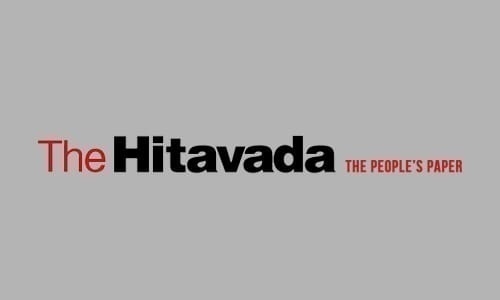INDIAN DEFENCE WILL BE GETTING A BIG BOOST WITH THE LATEST RAFALE DEAL
Date :19-Jul-2023

BY GIRISH LINGANNA
THE battle-hardened Rafale aircraft has proven its capabilities in various conflict zones, including Afghanistan, Libya and Syria. Equipped with a formidable arsenal of potent weapons, this fighter jet possesses lethal capabilities, The Rafale—produced by the renowned French defence company Dassault Aviation—was first introduced into operational service with the French Navy in 2004 and, later, with the French Air Force in 2006.
India-France agreement during Prime Minister Narendra Modi’s visit to France on July 13 and 14 on the supply of the latest variant of Rafale is a big boost to the country’s defence capability The Rafale, a 4.5-generation aircraft capable of reaching twice the speed of sound (Mach 1.8) is a truly versatile fighter, or fully omnirole aircraft, which means it can simultaneously carry out at least four missions in a single sortie. The four missions include air superiority, ground attack, anti-ship and air-to-air refuelling. It can control air space over a battlefield, attack ground targets with precision-guided munitions, attack ships with missiles and refuel other aircraft in flight.
In September 2016, India and France entered into an inter-Government agreement (IGA)
worth €7.87 billion ($9.4 billion or approximately INR 59,000 crore) for the procurement of 36 Rafale multi-role aircraft in flyaway condition.n September 2020, the Indian Air Force officially inducted the first batch of five Rafale aircraft out of the total 36 at the Ambala Air Force Station in Haryana. These jets became a part of the Golden Arrow Squadron, and the remaining 13 were also stationed there to complete the first squadron of 18 jets. However, due to the COVID-19 pandemic, there were delays in the delivery process. By July 2022, the delivery of the entire consignment of 36 Rafale aircraft was successfully completed, marking the fulfilment of the procurement process initiated by Prime Minister Narendra Modi seven years earlier.
The second squadron of 18 Rafale fighter jets, commissioned by India from France, was based at the Hasimara Air Force Base—which holds strategic importance for Indian Air Force operations due to its proximity to Bhutan—in Alipurduar district of West Bengal. Two squadrons are deployed on its eastern and western fronts to take on its adversaries—namely China and Pakistan. Chumbi Valley, close to Hasimara air base, where the India-Bhutan-China tri-junction is located, is in close proximity to Doka Lam, the place where a stand-off between the Indian and Chinese forces occurred in 2017. In the event of a potential attack by China targeting the Siliguri corridor to sever India’s northern region, Hasimara air base would serve as a critical launching point for a counter-attack.
Industry officials say the navy’s decision to choose the Rafale-M has the advantage of 80% similarity with the IAF’s 36 Rafale fighters, apart from its operational capabilities.
Dassault had set up a Rafale flight training and maintenance facility at Ambala, in Haryana, which could make it possible to cut down drastically on overall procurement expenses and speed up the navy’s introduction of the Rafale M.
While Egypt, another user of the Rafale aircraft, faces extreme desert conditions, India’s battle conditions are influenced by a diverse weather pattern shaped by the Himalayas and the Thar Desert. The Dassault Rafales supplied to India are considered more advanced compared to those acquired by France and Egypt. They have been meticulously adapted to meet the specific requirements of the Indian Air Force. These modifications include such features as helmet-mounted optics and a mechanism enabling pilots to swiftly engage targets with their weapons.
Due to India’s challenging border conditions with China and Pakistan—particularly in Ladakh and Kashmir where temperatures can drop below freezing point—the Indian Rafale jets have been equipped with capability for cold engine starts. This allows them to operate from high- altitude bases, including Leh.
Indian Rafales are also being equipped with the X-Guard fiber-optic-towed decoy system.
This advanced technology helps the aircraft avoid being targeted by both air-to-air and surface-to-air missiles, enhancing their defensive capabilities.
Engines: The Rafale aircraft is fitted with two Snecma M88 engines. Each of the engines can generate up to 50 kilonewtons (11,000 pounds-force) of dry thrust. When utilising afterburners, the engines can produce a thrust of 75 kilonewtons (17,000 pounds-force).
Maintenance: The necessary upgrades for the Rafale aircraft will be conducted at the Ambala air base, which houses maintenance and repair facilities specifically designed for Rafale fighters in India.
Weaponry package: The Rafale, with its 10-ton empty weight, is fitted with 14 hard points; five of these points can carry drop tanks or heavy ordnance. The total external load capacity is more than 9 tons (20,000 lbs). Rafale jets have the ability to carry a variety of formidable weapons. Notably, the Meteor air-to-air missile and Scalp cruise air-to-ground missile, crafted by European missile-maker MBDA, serve as the primary pillars of their weapons arsenal. Scalp has a long-range and low-altitude flying capability and the missile can operate at any time of day or night.
Meteor is an advanced missile designed by MBDA to improve air-to-air combat. It is capable of engaging targets beyond the pilot’s visual range. The missile was created to counter common threats faced by such countries as the UK, Germany, Italy, France, Spain and Sweden. At a range of almost 100 km, it is capable of taking out hostile aircraft.
The Indian Air Force has expanded the Rafale’s weaponry by including the HAMMER (Highly Agile Modular Munition Extended Range) all-weather missile, developed by Safran, in its arsenal. This addition was deemed necessary to enable precision strikes at shorter distances during missions. A fire-and-forget weapon, Hammer, which can be launched from a small range to a longer range without the use of GPS, operates up to a range of 70 km and is more immune to target location errors and jamming.
(IPA)
n
(The author is a Defence, Aerospace & Political analyst)
I
